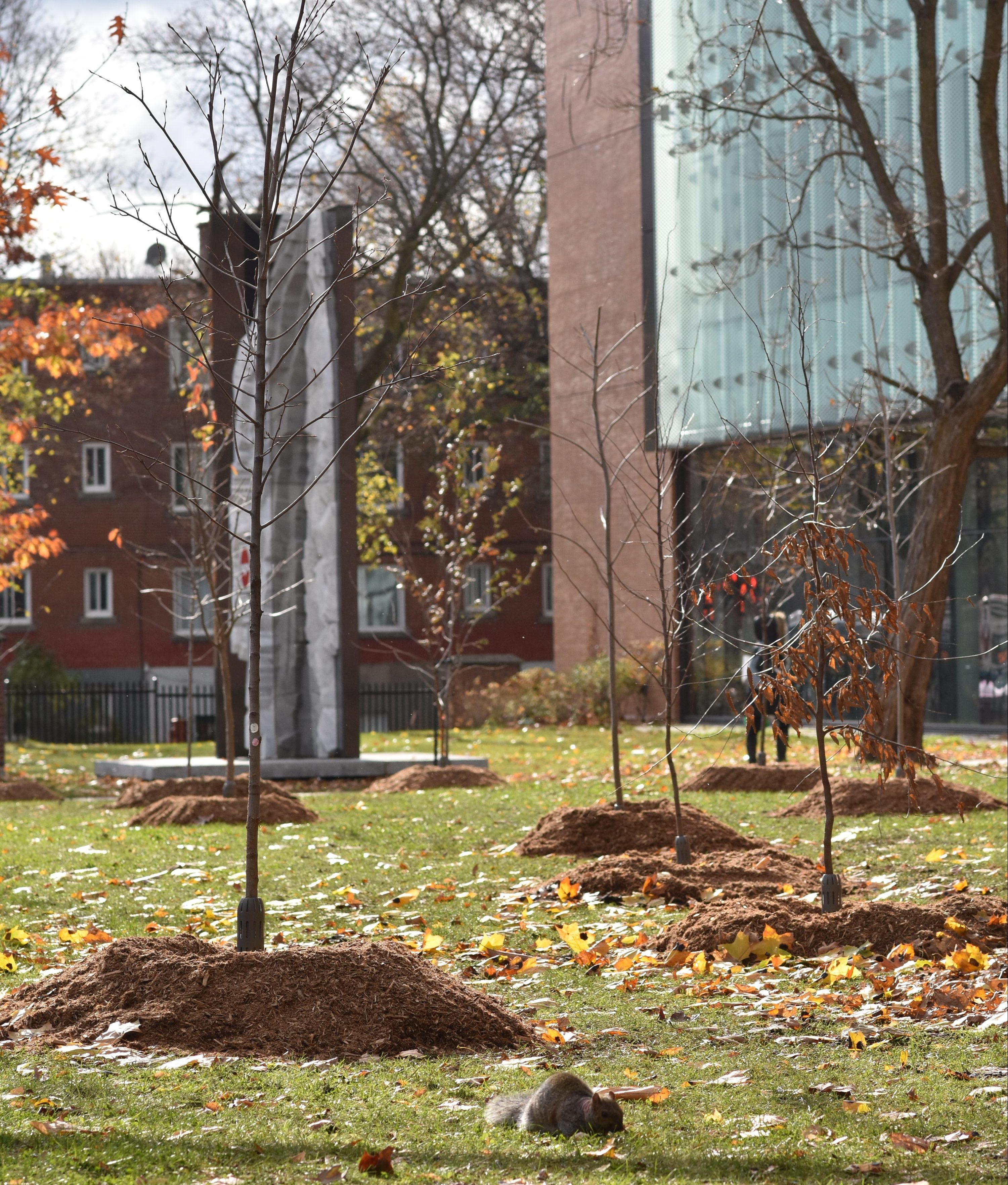The Concordia Greening Project collaborated with non-profit organization Soverdi in planting over 185 Indigenous trees at the Loyola campus.
You may have noticed a new addition to Loyola’s scenery this week – around 129 Concordia students, professors and staff planted various types of trees that are native to Quebec’s forest system on campus.
The Loyola tree-planting event began last week, on Nov. 5, but the idea came up last February at the Concordia Greening Project’s first committee meeting.
The Concordia Greening Project is a new student-faculty collective that aims to promote greener practices on Concordia campuses.
Before the project, the campus’ landscape was mainly occupied by species of maple trees. Now you can find more than 20 varieties of Indigenous species such as the Canadian Serviceberries, White Birches, Red Oaks and Jack Pines.
“It’s a shame not to use the wonderful space that we have to its fullest benefits,” said Concordia Biology Professor Rebecca Tittler. “Trees provide cleaner air, water filtration and also improves well-being,”
Trees feed off carbon dioxide which takes up a little more than 75 per cent of global greenhouse gas emissions according to the United States Environmental Protection Agency.
“Young growing trees sequester a lot of carbon dioxide from the atmosphere and put it into their own growth; the growth of their leaves and trunk,” Tittler said.
According to a 2019 StatCan report on greenhouse gas sources, the combustion of fossil fuels is the biggest emitters of carbon dioxide in Canada.
Trees are also commonly used to help fight extreme hot weather by providing shade and protection against heat waves. They cool the air with the water filtered through their roots, which is later released through the trees’ leaves. Trees also filter stormwater runoff from transporting toxic substances into nearby rivers and avoid contaminating the city’s clean water system.
A little over 100 trees were planted around the Stingers Dome, 44 more native trees near Hingston Halland and 41 forest trees similar to Quebec’s woodlands in front of the Communications Studies and Journalism building.
“We’re just students trying to see action in what we’re studying and trying to make changes,” said Founding Member of the Concordia Greening Project Theo Vergnet, who also studies Human Environment at the university.
With over 500,000 people who joined this year’s Montreal climate march, this is a step up for Concordia students and faculty members to demonstrate their part against global climate change. The event went on for four days, but the new installation provides the Loyola campus with a sustainable and long-term solution to certain environmental issues.
These Indigenous trees will be used as a teaching tool for the biodiversity classes taught by professor Tittler at the university. Being right outside the school buildings, students in the Sustainability program can get a more hands-on experience of the subject rather than learning about it from lectures in a classroom setting.
Over $50,000 went into funding Loyola’s tree-planting project, with the City of Montreal subsidizing 54 per cent of the cost and TD Bank covering 36 per cent as part of its #TheReadyCommitment program. Concordia University contributed 10 per cent.
“I think it’s a great partnership between institutions and Soverdi. Green spaces are really important; that we preserve and take care of it.” said Mayor of Côte-des-Neiges-Notre-Dame-de-Grâce Sue Montgomery in an interview with the Concordian. She visited the sites and even planted her own tree at the campus.
Photo by Laurence B.D.




